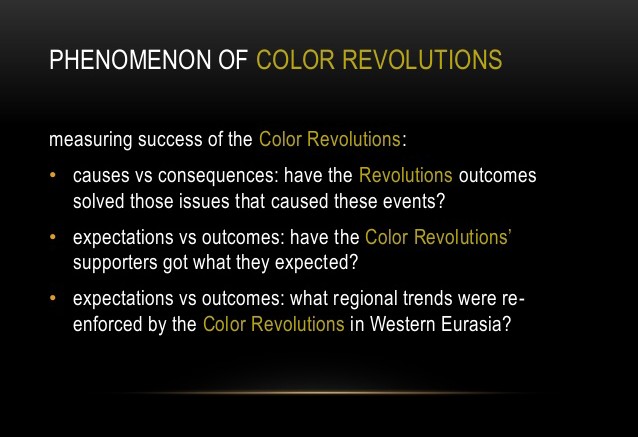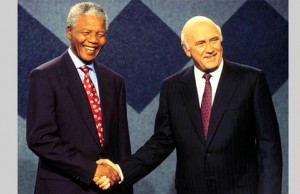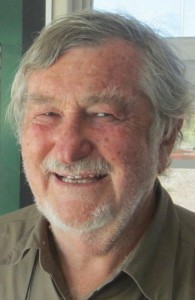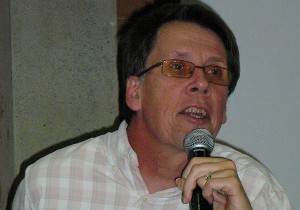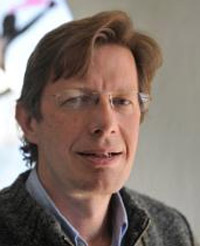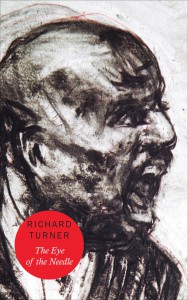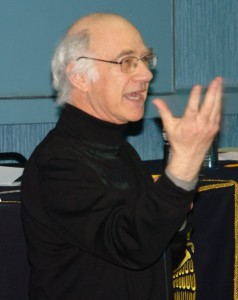RE POSTED FROM EXECUTIVE INTELLIGENCE REVIEW
No to British Regime
Change in South Africa!
by David Cherry and Ramasimong Phillip Tsokolibane
Jan. 10—South Africa is being rocked by destabilization. The leading edge of the operation is the recent call of the Metalworkers Union (NUMSA)—the largest in the country—for regime change. This comes just as the spirit of the BRICS association of nations (Brazil,
Russia, India, China, and South Africa) is taking hold worldwide, and as the commitment of South Africa’s ruling African National Congress (ANC) to the BRICS—and to nuclear power—is becoming entrenched. The ANC has chosen the only path that can provide the country with a future. What hostile force, then, is at work? The destabilization is no different, in essence, than the one Russia is now experiencing. Both come from the same mother, the British Empire in its neocolonial phase—based on propaganda, and financial and psychological warfare—and both have the same intent: to immobilize or overthrow lawful governments that threaten to break out of the British system and create the beginnings of an alternative worthy of the human spirit—the BRICS association. The project includes surrounding Russia and China with hostile governments as a step toward the overthrow of the governments of those two nations.
Attacks on lawful governments of this type are today called “color revolutions”—rose (Georgia), orange (Ukraine), and pink (Kyrgyzstan). They overthrew and murderedMuammar Qaddafi in Libya more than three years ago, reducing the country to violent chaos that continues today. They overthrew the elected government of Ukraine in February 2014, installing a government laced with the Bandera Nazis and cabinet
appointments made in Washington, in preparation for triggering a war with Russia.
The underlying method of the color revolutions is the mass mobilization of mostly well-meaning people, with a false promise—and false concept—of democracy. It is not new. More than 200 years ago, Britain’s Lord Shelburne guided intelligence chief Jeremy Bentham in shaping the French Revolution of 1789 with this method, using Finance Minister Jacques Necker. France had contributed to the American Revolution against the British Empire, and there was a danger (for the Empire) of a revolution in France on the same admirable principles. Shelburne and Bentham preempted it, inducing a phony revolution that mobilized the masses to install a reign of terror, and literally decapitate much of France’s intelligentsia.1
The African Background
In Africa, likewise, the color revolution method must be understood in the context of the history of the British Empire. There is an unbroken continuity of
The British thought they owned Nelson Mandela, but Mandela defeated their race
war plan in his talks with President F.W. De Klerk. The two are shown here in
January 1992.
thought from Cecil Rhodes’ planning in 1877 for “the extension of British rule throughout the world” (in his first will), to official British policy throughout the 20th Century and today. Indeed, the Rhodes Trust and its Rhodes Scholarships—to bring colonials (and Americans) to Oxford—continues today, based on the same motive. The secretive Round Table organization created by Rhodes is also alive and well. When the traditional form of British imperial rule— with boots on the ground—was seen to have a doubtful future, the British prepared in advance to move to “indirect rule.” The original version of indirect rule, developed by the Round Table, involved using traditional African chiefs as agents of empire and excluding educated, urban Africans. That policy was worked out in the early 20th Century by Rhodes’ executor Lord Alfred Milner, and Lord Frederick Lugard.
During World War II, however, the Round Table sent Lord Malcolm Hailey to reassess conditions in Africa. Hailey concluded that it was necessary to promote and use educated Africans to guarantee imperial control. He also spoke (but did not write) of the need for
nominal “majority rule” for the same purpose. It was still a highly unpopular idea in the British establishment.
Hailey’s new version of indirect rule came into force in the first years after World War II. Andrew Cohen, Africa division chief in the Colonial Office, carried out the revolution in policy. The nominal “independence” of African countries was no longer seen as a problem;
it was instead actually necessary— for British rule to continue by other means. Under neocolonialism, Africans would be “educated” to rule Africa for the British. Cohen was rewarded with a knighthood, and became known in the Colonial Office as “the King of Africa.”2 Today, the British continue to use this approach into which the color revolution
method fits perfectly. In the story that follows, we see the centrality of the
British Empire—especially through Oxford University—in the preparation
of South Africans to act on behalf of British imperial interests out of their
own disoriented consciousness. We see the preparation of a potential for a color
revolution in South Africa
Gene Sharp, Oxford Man
Since before the collapse of the Soviet Union in 1991, the pioneer of color revolution warfare worldwide has been Gene Sharp and his so-called Albert Einstein Institution (AEI) in Cambridge, Mass. Sharp had more than 20 years of preparation. He took his doctorate
in political theory at Oxford University in 1968; his inspiration came from Oxford. He returned to Oxford for unspecified “advanced studies.” His project had a military and intelligence orientation from the beginning. His initial book, The Politics of Non-Violent
Action, based on his doctoral dissertation, has an introduction by Thomas C. Schelling, the Cold War theorist and promoter of escalation in the Vietnam War. Some of
Sharp’s early work was in fact funded by the Pentagon’s Advanced Research Projects Agency, via Schelling at Harvard.
The pioneer of color revolution warfare worldwide has been Oxford man Gene Sharp
and his so-called Albert Einstein Institution (AEI) in Cambridge, Mass
Under the false flag of the names of Mahatma Gandhi, Martin Luther King, and Albert Einstein, Sharp operates on behalf of those utterly opposed to the social and political ideals of these three leaders. Sharp’s AEI has been funded by the U.S. side of the British Empire— Ford Foundation; George Soros’s Open Society foundations; the National Endowment for Democracy (NED) and its subsidiary, the International Republican
Institute (IRI); and the U.S. intelligence agencies’ United States Institute of Peace.
Jennifer Windsor, while executive director of Freedom House, a right-wing NGO in Washington, wrote that Sharp’s book Waging Nonviolent Struggle, “is a
must-read book for policymakers and practitioners who, in the aftermath of the peaceful democratic [sic!] revolutions in Ukraine and Georgia are finally asking,
‘How did it happen?’ ” Sharp’s work has been praised in the Wall Street Journal.
Sharp literally “wrote the book” on how masses of unarmed people can be manipulatedto overthrow (or initiate the overthrow of) a government. According to his close associate, U.S. Army Colonel Robert Helvey (ret.), the Sharp brand of nonviolent struggle “is all
about seizing political power or denying it to others.”3. That is not to say that there is no violence. When violence is necessary to complete the process, violent political groups may be on hand, or special forces may be quietly sent in, or both. But Sharp avoids mentioning the violent factor in the equation.4 At the Third Moscow Conference on International Security, May 23, 2014, Russian Defense Minister Sergei Shoigu characterized the color revolutions as a new form of warfare invented by Western governments seeking to remove national governments in favor of those controlled by the West. Shoigu pointed out that the consequences of color revolutions are very different from the protest organizations’ initial stated goals.5 Shoigu was referring to the work of such figures as Gene Sharp, George Soros,6 and—as we shall see—Michael Burawoy. A detailed analysis—and a view of how to prevent color revolutions—then appeared in Military Thought, journal of the Russian Defense Ministry.7
The South African Case
The leaderships of the Metalworkers and other smaller unions have been targeted for years by the Gene Sharp apparatus in South Africa, moving them increasingly into outraged opposition to the government and the ruling ANC. NUMSA General Secretary Irvin Jimhas called the ANC gangsters and tsotsis (thugs). At a conference organized by NUMSA to form a “United Front for Socialism,” held December 13-14, 2014 in Boksburg,
near Johannesburg, NUMSA reportedly declared that the United Front will bring the “democratic regime change” that South Africa needs to free its citizens from neoliberalism.
[8] NUMSA had been accused in November of seeking regime change.9 At least one public figure outside NUMSA had answered the accusation: Barney Pityana, Fellow, Kings College London, and rector of the Anglican College in South Africa, told a Dec. 4 meeting in Johannesburg, “Indeed we do want regime change, because that is what democracy is all about.” No, Reverend Pityana, you are lying. Regime change is all about trashing constitutions, laws, and elections. The Johannesburg meeting was convened by Democracy Works, an organization linked to the pernicious U.S. NED, one of Sharp’s funders. In South Africa, as elsewhere, “regime change” is a threat of much more than a change of regime. Consider the background: The British oligarchs—not the British
people—had hoped for a race war as the outcome of the liberation struggle. Why? Prince Philip and the old families have no use for Africans in a world that has too
many people for their comfort. In 2009, their Optimum Population Trust (populationmatters.org) released a study calling for reducing world population by 3 to 5 billion people by 2050. In 2013, Paul Ehrlich wrote in
An event like the Marikana massacre of platinum mineworkers, in which 34 were killed
by police, on Aug. 16, 2012, was likely a “special op,” that created popular outrage, of
the type ready to be manipulated by the regime-change specialists
the Proceedings of the Royal Society that it “would take four or five more Earths” to support the existing world population of 7 billion at the level of U.S. living standards. In other words, according to Ehrlich, one Earth can support no more than 1.4 billion at an “appropriate” standard of living. Any plan for this level of killing through conflict
and disease will target the most vulnerable, including Africans, early on. In the liberation struggle, the British had deeply penetrated all sides, and thought they owned Nelson Mandela. But Mandela defeated the race war plan in his talks with President F.W. De Klerk through his combination of nobility of soul and firmness, in the context of the stalemate of forces on the ground. The oligarchs, however, do not give up; for them, any mobilization
based on popular rage is a new opportunity. The trigger for popular outrage leading to regime change could be an event like the massacre at Marikana.
The massacre by police of platinum mineworkers on a wildcat strike against Lonmin, in which 34 were killed, on Aug. 16, 2012, enraged the nation. Such an event—engineered or not—could create enough instability to threaten South Africa with a downward spiral.
(Videos of the Marikana massacre suggest manipulation of both miners and police, probably at the level of “special operations.”)
The foregoing picture indicates some of the dimensions of the potential of the British imperialists to end South Africa’s commitment to the BRICS.
The BRICS and Their Enemies
For the British Empire, the BRICS association is the ultimate threat, and the reason for the regime change push in South Africa, and related operations against the other BRICS governments. Africa will be a major focus for the BRICS, which offers a chance to
build up the continent, from farms and factories, to roads and rails, homes, schools, and hospitals. South Africa will be the launching pad for much of the work in Africa. The BRICS can accelerate the development of the South-North transportation corridor of roads,
rails, and bridges, championed by President Jacob Zuma, which will run from Cape Town to Cairo. In Zuma’s words, the concept should include “bringing energy infrastructure into the mix, and, most importantly, using the corridor to promote industrialization.”
The BRICS initiatives begin with putting an end to a unipolar world, and provide an alternative to the current global financial system of the British oligarchs, in which
interest rates are high, investors are only interested in quick returns, and the World Bank and IMF discourage or effectively forbid the construction of heavy industry
Eddie Webster is a central figure in the color revolution network,
and former director of the Society, Work and Development Institute (SWOP), whose field of
study is “the making and unmaking of social order
so necessary to the uplifting of the people and
to national sovereignty. The BRICS perspective opens the possibility of
long-term loans at low interest that are necessary for major projects
in the public and private sectors. The BRICS nations understand that conventional nuclear
power—to be followed by nuclear fusion—is the only possible energy source for a growing
world population with a rising level of material and cognitive development.
At last—a way out of some, at least, of South Africa’s fundamental problems.
But no: Those who oppose the ANC and claim they are going to fight for “socialism
now” oppose the BRICS, whether openly or quietly.10 It is, they say, just more neoliberalism.
They oppose nuclear power plants, and are told that windmills can take their place.
And, they say, the BRICS is just a cover for China to dominate the country.
These comrades are not alone—London and Wall Street could not agree more!
For example, Foreign Affairs, the quarterly of the Anglophile establishment in the United
States, has published articles hostile to the BRICS, from 2012 onwards. Britain has runpropaganda warfare against nuclear power worldwide, even while it uses
nuclear power and is building a new nuclear power station at Hinkley Point. And London and Wall Street
Karl von Holdt is a student of Webster, and has analyzed workers’ use of ungovernability in the workplace, and the functions of corruption and violence in South African political life
mouthpieces warn that China wants to dominate the world— when their real concern is to
ensure the survival of their own unipolar world domination.
Patrick Bond, director of the Centre for Civil Society at
the University of KwaZulu- Natal, is among those who openly oppose the BRICS, and
deny or dismiss its “win-win” spirit. He does not appear directly
connected to AEI or SWOP (Society, Work and Development
Institute), but his intentions, methods, and funding sources are much the same.
Patrick Bond
The activists working against the government usually avoid these issues. They talk instead about the very serious problems of unemployment, poverty, and corruption,
but as if these could be resolved by regime change, without changing the larger financial system within which South Africa operates. Most activists are not aware that their work is steered by London and Wall Street without any regard for unemployment, poverty and corruption.
Who’s Who in South Africa’s
Regime Change Network
Gene Sharp: Godfather of post-Cold War color revolutions worldwide, and author of the manual for color revolutions, From Dictatorship to Democracy
(1993). Trained at Oxford. Sharp is an important figure for Anglo-American military and intelligence; he is funded by the neoliberal establishment; and operates from his Albert Einstein Institution (AEI) in the U.S.
SWOP: Center of the color revolution apparatus in South Africa. An institute in the University of the Witwatersrand (Wits). Originally the Sociology of Work Project. Now called the Society, Work and Development Institute, but still known as SWOP.
Eddie Webster: South African sociologist/activist. Master’s degree from Balliol College, Oxford. Collaborated with Rick Turner in the 1970s. Founded SWOP, 1983. Connected SWOP to Sharp’s AEI, 1993.
Rick Turner: South African anti-apartheid political scientist. Author of the “bible” of the workerist movement, Eye of the Needle: A Guide to Participatory
Democracy in South Africa (1972).
Karl von Holdt: Student of Webster, and now his successor as director of SWOP.
Michael Burawoy: British sociologist/activist at University of California, Berkeley. Globe-trotting promoter of color revolutions. Funded by neoliberal foundations. Close collaborator of Webster.
NUMSA: National Union of Metalworkers of South Africa. Called for “regime change” against the ANC government in late 2014, after years of imbibing the teachings of SWOP.
Color Revolution Apparatus
The color revolution network in South Africa is organized around the SWOP at theUniversity of the Witwatersrand in Johannesburg (“Wits,” pronounced “Vits”) and SWOP’s former director, sociologist and activist Eddie Webster. Originally known as the
Sociology of Work Project, SWOP currently describes its field of study as “the making
and unmaking of social order.” Webster is now professor emeritus, but is still a central figure in the color revolution network, whose members call themselves Marxists.
The workerism of SWOP can be traced to Rick Turner in Durban, in the 1970s, whose 1972 book, “The Eye of the Needle: A Guide to Participatory Democracy in South Africa” (1972), is the bible of the South African workerist movement
Webster and Glenn Adler describe SWOP’s relationship with Sharp’s AEI in the book Trade Unions and Democratization in South Africa, 1985-1997. They write that the project for the book “crystallized around labour’s role in [South Africa’s] transition [to black rule,] through our collaboration, since 1993, with the Albert Einstein Institution (AEI) of Cambridge, Massachusetts. AEI’s South Africa Program directed by Barbara Harmel, and the Sociology of Work Unit (SWOP) at the University of the Witwatersrand, launched a project on trade unions and popular resistance in South Africa, derived from AEI’s interest in social movements’ use of nonviolent direct action in political change. This collaboration helped us to conceptualize labour as an actor using its power strategically to resist apartheid and
to reconstruct a new South Africa.”11
Thus, Webster and Adler actually say that SWOP took direction from AEI to pursue “AEI’s interest in social movements’ use of nonviolent direct action in political change.” AEI commissioned the papers that SWOP put together in two books, Adler and Webster’s Trade Unions and Democratization (2000) (Adler was in SWOP at the time); and From Comrades to Citizens: The South African Civics Movement and the Transition to Democracy, edited by Adler and Jonny Steinberg (2000). Dr. Steinberg is a former Rhodes Scholar who, like Gene
Sharp, did his doctorate in political theory at Oxford. He spent a year in New York City with Soros’s Open Society Institute; he is currently a lecturer in African studies at Oxford, and will soon return to Wits. In recent years, he has studied the South African police and the
underworld. A significant contributor to this volume was Colin Bundy, vice chancellor and principal of Wits at the time. Then in 2001, Bundy was appointed Director of the University of London’s School of Oriental and African Studies, one of the key institutions of British
neocolonialism.12
AEI has also funded Webster’s successor as director of SWOP, Karl von Holdt, supporting the research for his paper, “Social Movement Unionism: The Case of South Africa.”13 Von Holdt, one of Webster’s students, has also analyzed workers’ use of ungovernability in
the workplace, and the functions of corruption and violence in South African political life.
Since 1993, therefore, Gene Sharp has been developing a fifth column in South Africathat was already nicely in place—a network that has expertise in the dynamics of the social fabric and could be called into action if the ANC began to deviate from its commitment
to the British financial empire of neoliberalism. And now it has. But of course, SWOP was meant to be used as a fifth column from its founding in 1983.
Social Movement Unionism and Workerism
SWOP promotes “social movement unionism,” the organizing of workers around broad social issues that go beyond the workplace, but with the intention of using disciplined trade unions as a force against government with respect to those issues. Social movement
unionism was successfully used against apartheid. Now it is being used supposedly to right the wrongs of the ANC government. But it is actually being used to stop the ANCfrom solving some of the very problems that have understandably fueled frustration and anger
among South Africans. SWOP promotes the doctrine of “workerism,” the idea that workers should democratically run the factories in which they work. Workerism has a history.After the 1917 Russian Revolution, Alexander Gavrilovich Shlyapnikov, who became chairman of the All-Russian Metalworkers Union, and Alexandra Mikhailovna Kollontai
organized a workerist movement, the Workers’ Opposition within the Communist Party. It was one of a number of British operations against the Soviet state.
Lenin opposed and defeated workerism because it would have made central direction of economic policy impossible. Workerism would have forestalled the rapid industrialization of Russia that made victory possible in World War II. The workerism of SWOP can be traced to Rick Turner in Durban in the 1970s, whose book, The Eye of
the Needle: A Guide to Participatory Democracy in South Africa (1972), is the bible of the South African workerist movement. A key premise of the book is that “capitalism is intrinsically growth-oriented,” and that growth is bad. Turner writes, “But there are limits to growth: And those limits are not in the far distant future.
They are probably within our lifetimes. . . . There are limits to the physical resources of our planet.”14 Nuclear energy is no help, he says, because we will run out of uranium. It does not occur to him that “resources” are not a given, but are defined, and redefined, with successive technological advances. Uranium is a key resource today, but not tomorrow.15
These ideas, hostile to human progress—promoted by His Royal Virus Prince Philip and the other oligarchs behind the Worldwide Fund for Nature—have been injected into the black unions beginning no later than 1979, when Webster helped to found the Federation of
Prof. Michael Burawoy is a British-born, self-described “Marxist” sociologist who took his B.A. at Cambridge University, promotes color revolutions, and shrugs off the
ensuing death and destruction.
South African Trade Unions (FOSATU). Turner’s book, after being out of print for years, is to be reissued in early 2015. Webster was a close friend of Turner in the 1970s, until Turner’s assassination by the secret police in 1978. The South African workerists, like their Russian predecessors in the 1920s, have always claimed to be Marxists, but of a different kind. In South Africa, they set themselves apart from the dominant outlook in the ANC and its allies, which looked to a strong, centralized state power as an indispensable instrument to
achieve democracy, industrial and agro-industrial progress, and economic advance for all classes. But the workerists played a significant role in the struggle against apartheid and collaborated with the ANC, providing badly needed skills. In this way, the workerist movement—with its radical decentralizers, antinukes, Trotskyists, and what have you—is now positioned to challenge the ruling institutions after the transfer of political power, using methods developed in the antiapartheid struggle.
Trapped in a Process
Turner, Webster, and Webster’s colleagues are not monsters, but—in their everyday lives—gentle, humane people who have gained the trust of many. They both opposed apartheid and suffered consequences. Their studies of South African labor, work-places, and unions are useful and valuable. But how is it that Webster and his colleagues have been funded and directed by Sharp’s AEI? Did they not know what Sharp was really up to? Did they not know who Barbara Harmel, and the Aspen Institute from which she came, were? Webster and SWOP have taken Ford Foundation, Friedrich Ebert Stiftung, and Mellon money—unmistakably neoliberal sources. They have even taken money from the U.S. Agency for International Development (USAID).16 Webster may claim that he is indifferent
as to where the money comes from. But the reverse is not true: USAID and the foundations and institutes usually know whom they can trust, and are not careless in awarding their grants. How, then, did this come about? Their funders recruit the best, the most capable, whenever they can. Webster and his colleagues have been recruited into a process from which they cannot escape. They are trapped by a monster that is an ideology and an institutional framework. They will take offense at the suggestion that the mass mobilization they dream of will not be free to achieve the objectives that they treasure. But look at desolate Libya. Consider the suffering throughout Ukraine, where a color revolution replaced a bad government with a worse one that cuts the budget under International Monetary Fund direction and can’t provide energy for its people this Winter. Does Webster ever talk about the outcomes of such earlier projects. He may be careful about what he says, but his close associate Michael Burawoy is not.
Burawoy Sheds Light on Webster
Webster’s decades of alliance and friendship with Prof. Michael Burawoy at the University of California at Berkeley may help to make vivid the meaning of Webster’s seemingly abstract, academic connections to AEI. Burawoy appears not to be connected to Sharp and AEI, but he is working in parallel. Because he is important and dangerous, he deserves extended treatment before we turn to his connections to Webster.
Burawoy is a British-born, self-described “Marxist” sociologist who took his B.A. at Cambridge University, promotes color revolutions, and shrugs off the ensuing
death and destruction. He makes no reference to the strategic role of these revolutions, that is, their contribution to the warfare of the British financial empire
against the governments of Russia, China, and other nations that pose a threat to its system. He has been based at Berkeley since 1976, and is known for his ethnography
of industrial workers as a participant-observer in Zambia, the United States, Hungary (Metalworkers), and Russia.
Burawoy was president of the American Sociological Association in 2004, and president of the International Sociological Association for 2010-14.
The sly Burawoy is constantly at work on behalf of what he calls “movements against neoliberalism,” while he receives funding from foundations with impeccable neoliberal credentials. In 1993 and 2001 he received grants from the John D. and Catherine T.
MacArthur Foundation. In 2002-03, he was a Visiting Scholar at the Russell Sage Foundation in New York, and in 2010, he was Mellon Visiting Professor at Wits.
Burawoy’s Joke: Burawoy lets the cat out of the bag in his lecture on “Social Movements in the Neoliberal Age” (and the related “New Sociology for New
Social Movements”), given at universities since 2012, including the Universidad del Rosario in Bogotá, Colombia; the Ural Federal University in Yekaterinburg, Russia; the University of Nottingham, MalaysiaCampus, Semenyih, Malaysia; and the University of Johannesburg, South Africa. He advocates what he calls the “new social movements” that “defend against
the market and the state” or that “struggle against dictatorship.” These movements “see the state and national politics as hijacked by finance capital of the dominant classes” (allowing them to disregard constitutions, laws, and elections). He shows slides of the so-called Arab Spring, which “spread across the Middle East to Libya, Yemen, Syria, not necessarily with wonderful consequences, but it really represented a mobilized, collective upsurge of dominated groups.” In this way, he dismisses the destruction, carnage, and suffering from the Arab Spring with the wave of a hand, to emphasize instead that it “raised consciousness.” Perhaps it raised people’s consciousness that their upsurges—
with the help of airstrikes and armed attacks on the ground—had put much of these countries into the hands of jihadist warlords.
In this way, Burawoy exposes himself as a promoter of “new social movements”—in the name of “participatory democracy”—that can help to topple the government and destroy the productive capacity of a country, while having nothing to put in their place. In his Bogotá lecture, Burawoy told his audience that “it only took me eight months to destroy the Soviet Union.” It was a joke. But what a revealing joke, in light of the devastation of Russia by the vulture capitalists that immediately followed!17
Burawoy is spreading his vile message around the world. In 2012, he managed to visit Chile, Argentina, Canada, England, Portugal,Hungary, Ukraine, Russia, Romania, Kazakhstan, South Africa, Zambia, Thailand, China, Taiwan, and the Philippines. In 2011, he visited an even longer and mostly different list of countries. Since 2010, his schedule has included repeated visits to Ukraine, including the Kiev International Institute of Sociology.
Burawoy in South Africa:
With the unbanning of the ANC in 1990, Burawoy began his engagement in South Africa. In that year, he spoke before the South African Sociological Association and participated
in colloquia and lectured at Wits, the universities of Natal, Durban Westville, Rhodes, Fort Hare, and three others. He was on the editorial board of the South African Sociological Review, 1992-96. In 2001, he became an Honorary Associate of SWOP, and has been in South Africa almost every year since then. He was at the Chris Hani Institute in 2006 for a talk or colloquium, and addressed NUMSA in 2010. In 2012, Burawoy wrote, “My four-year stint with the Ford [Foundation] PhDs, which had brought me to the University of the Witwatersrand for three weeks each year, had come to an end. Karl von Holdt, then
acting director of the SWOP, invited me to come to Wits for a semester on a Mellon Visiting Professorship. I would work with students and faculty and also give public lectures. . . .”18There seems to be no shortage of Ford Foundation and Mellon money for these warriors
“against neoliberalism.” Burawoy and Webster are practically joined at the hip. Burawoy wrote in 2010 that he had spent 40 years “listening to, learning from, and living with” Webster. He calls Webster “one of South Africa’s most distinguished sociologists” and praises Webster’s SWOP for providing “a vision that defends the integrity of the university,
not as a retreat into the ivory tower but as an advance into the trenches of civil society.”19 Ah, yes, “civil society,” that congeries of movements, organizations, and individuals—some well-intentioned and some witting—that follow the Gene Sharp, Michael Burawoy, and George Soros pied pipers and other likeminded misleaders. “Civil society” has no other definition.
The case against Webster as a transmission agent of London and Wall Street vulture capitalism, not only rests on the sources of his and his SWOP associates’ funding—including funds from Sharp’s AEI—and on SWOP’s acceptance of direction from AEI. It is also clarified by Webster’s close association with Burawoy, who demonstrates clearly what their objectives really are, despite the high-flown rhetoric. In a nutshell, political operatives of the British global financial empire are currently fingering governments
that are not cooperative or—what is worse for them— are orienting toward the BRICS and nuclear power. These are branded as dictatorships or neoliberal, according to taste. Sharp, Burawoy, and others, funded by foundations loyal to London and Wall Street, then activate their networks to mobilize opposition to these governments, to force a change of policy or to overthrow them.
SWOP Penetration of the Institutions
The degree to which Webster, his students, and SWOP have penetrated into the present South African ruling institutions—especially the Congress of South Africa Trade Unions (COSATU) and the South African Communist Party (SACP)—can be illustrated in part by following Webster’s career. Webster obtained a master’s degree—and got his “Marxism”—at Balliol College, Oxford, and taught for the Workers’ Education Association in Britain. When he returned to South Africa, he met Rick Turner and they became collaborators.
Webster and his coworkers at the University of Natal soon founded the first workers’ college in South Africa, the Institute of Industrial Education. He was deeply involved in the formation of the Federation of South African Trade Unions (FOSATU) in
1979, the first non-racial trade union federation in South Africa. FOSATU committed itself to the principle of “workers’ control” in its constitution. WhenCOSATU was formed in 1985, FOSATU was merged into it. According to the biographical sketch of Webster on the Wits website, “He has retained an interest in trade union education, and shop stewards in particular, and undertook, on behalf of COSATU, the first nationwide shop steward survey. In 1994, he and fellow academics initiated a nation-wide survey of the political attitudes of COSATU members. Professor Webster has been centrally involved in the survey since then, in 1998, 2004 and, most recently, in 2009.” Books and papers by Webster and von Holdt, in addition to those already named, indicate the deep penetration
of Webster and SWOP into the labor unions over decades, and the trust they have developed with shop stewards. Webster published his book on the metalworkers
in 1985. Von Holdt also studied the metalworkers, and published Transition from Below: Forging Trade Unionism and Workplace Change in South Africa (2003). There are also studies by them and their associates of the mineworkers, the paper and printing workers,
and others. This is good and useful work. But where was SWOP leading labor?
NALEDI and the Chris Hani Institute
COSATU’s think tank, the National Labour and Economic Development Institute (NALEDI),
was founded in 1993, the same year that SWOP cooperation with AEI began. NALEDI repeatedly used leading SWOP and workerist personnel. Was it the brainchild of AEI? Jeremy Baskin, part of the workerist movement since the 1970s, became the director of
NALEDI in the 1990s after serving as National Coordinator for COSATU. Today he is in Australia working for Cambridge University’s Institute for Sustainability Leadership under the patronage of the Prince of Wales. Karl von Holdt, now the director of SWOP,
worked for NALEDI, and in that capacity had been coordinator of COSATU’s September Commission on the Future of the Unions. The 1997 report of the commission had favored the workerist agenda and called for “social unionism.” Glenn Adler of SWOP had worked for NALEDI as a senior researcherIn 2011, NALEDI called for a return to “social movement unionism,” a phrase said to have been coined by Webster. In this 2011 call, NALEDI asked, “Does labour (namely COSATU) continue to rely on the political structures as a member of the ruling tripartite alliance or does it align itself with civil society organizations
outside the formal political corridors?” The question was implicitly a call for COSATU to leave— and oppose—the ruling alliance. NUMSA then took the lead in attacking the alliance. Webster has been the Director of the Chris Hani Institute (CHI) since March 2013. He has been a board member for much longer. CHI was founded by COSATU and the SACP in 2003 as an academy to provide ideological and political training for “selected youth, [shop] stewards, and officials current and future.” It sees itself as “an independent think tank of the left” to “engage in the battle of ideas, to develop alternatives to neoliberalism, deepen the links between progressive intellectuals in our universities and inside
the democratic movement.” This is now in the hands of Webster, the warrior for neoliberalism. The ANC has chosen the only strategic path that can begin to liberate South Africa from the control of the global British financial dictatorship. The threat to the
ANC government from Sharp, Burawoy, Soros, and SWOP is a threat to South Africa itself. A coalition of opposition forces could oust the ANC government, but could not rule. Surely, even patriotic South Africans outside the ANC can see this.
A BRICS World
Virtually all of Ibero-America’s governments have now oriented toward the BRICS to escape the clutches of neoliberalism. Argentina, under President Cristina Fernández de Kirchner—that resolute warrior against vulture capitalism—has expressed interest in joining the BRICS. President Evo Morales of Bolivia sees the BRICS’ New Development Bank, as the means to put an end to neoliberalism and neocolonialism. His government
is also planning to build nuclear power plants. Now Egypt, Nigeria, Iran, Syria, and Bangladesh have expressed interest in joining the BRICS. Like the ANC government in South Africa, they too will have to expose and defeat the synthetic revolutionaries working
for Sharp, Burawoy, and Soros.

